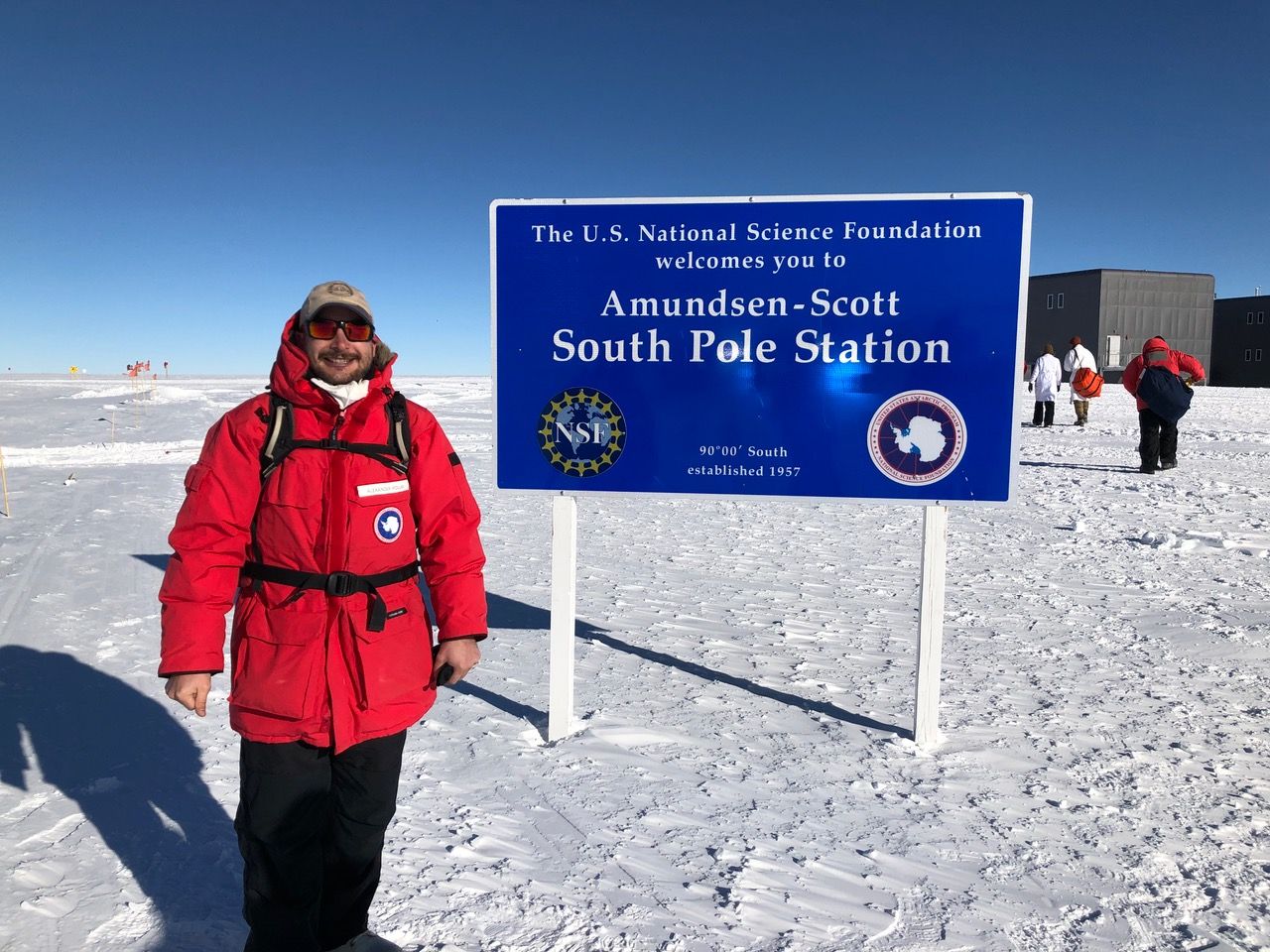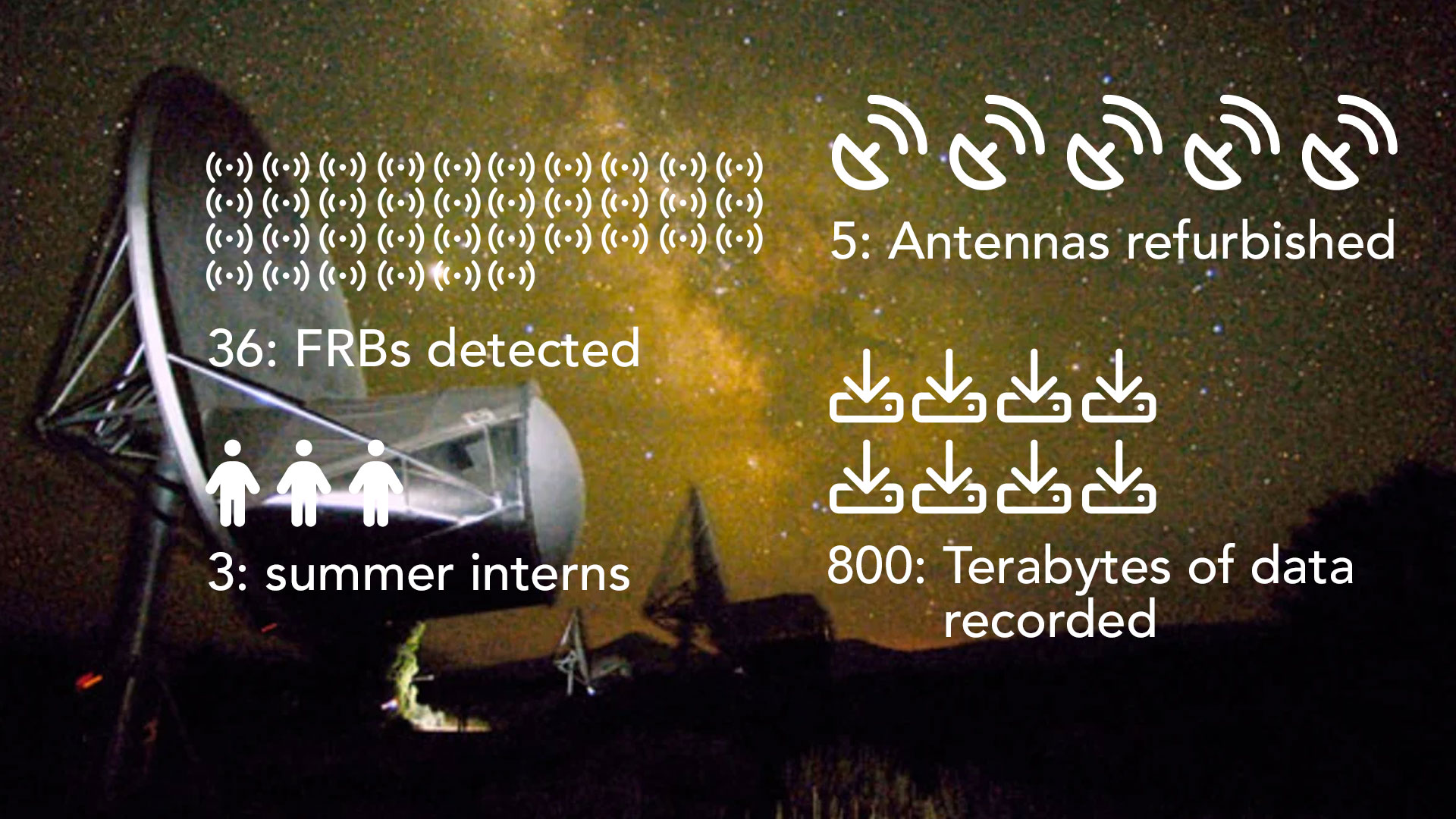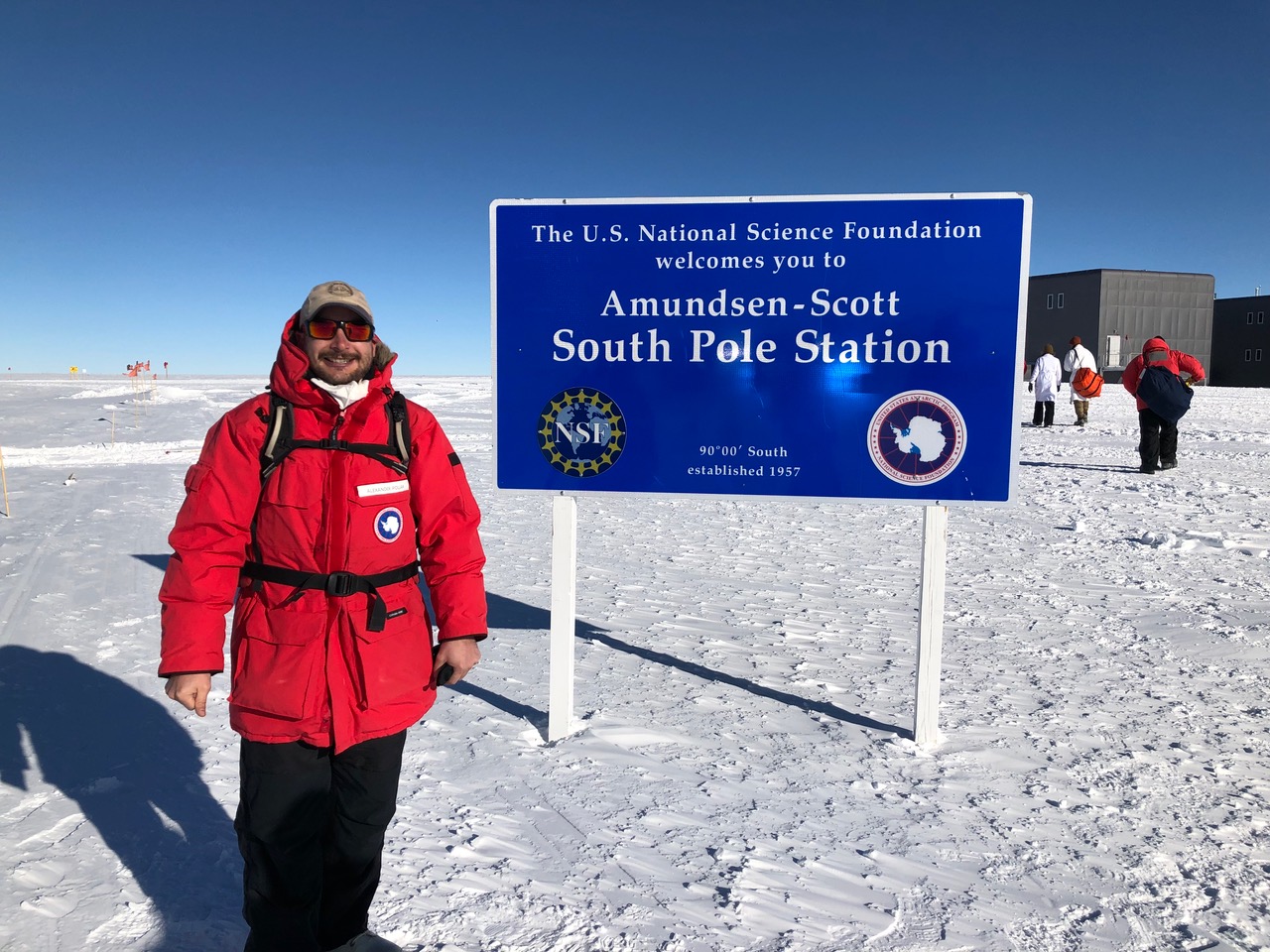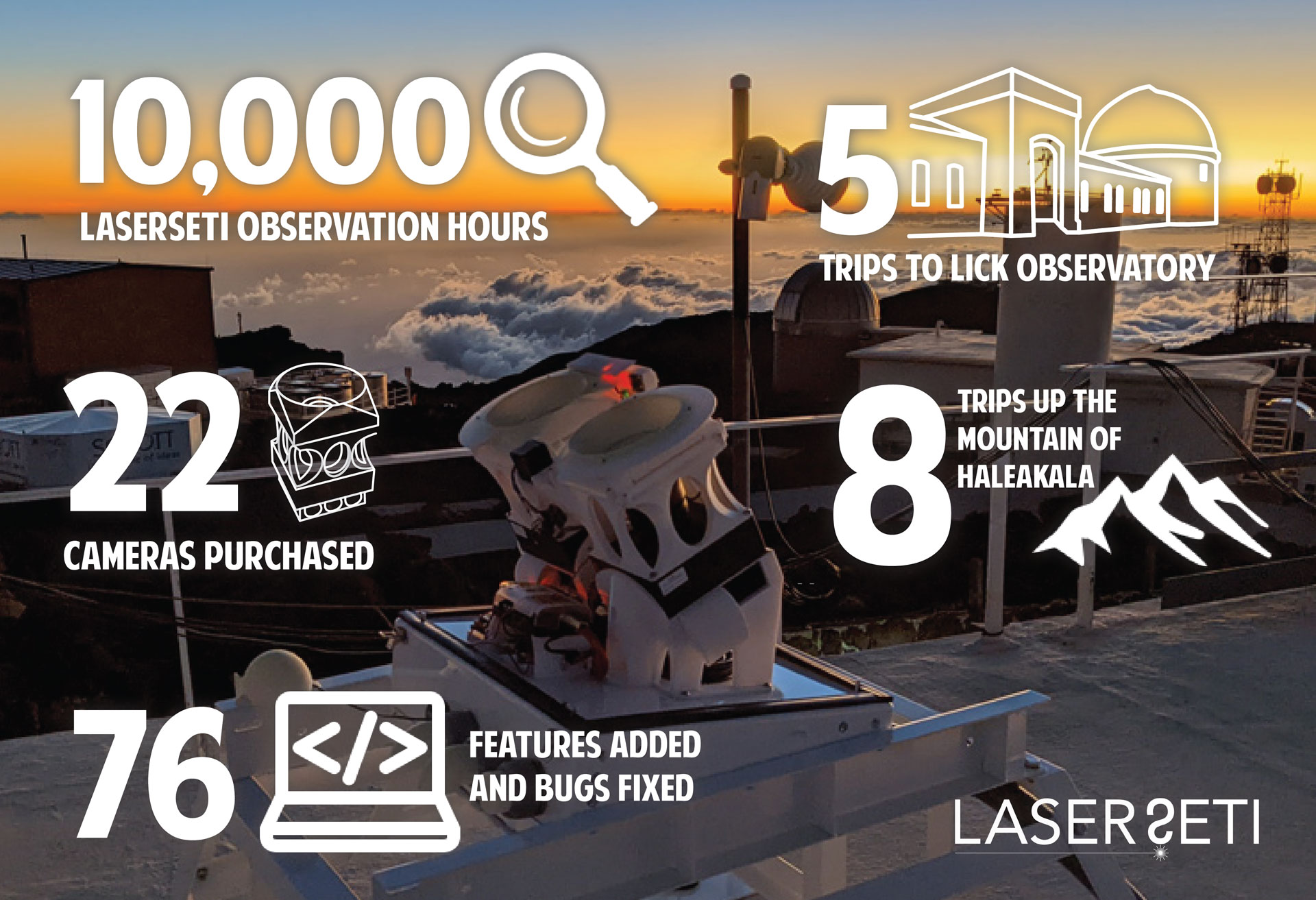
The SETI Institute’s search for life beyond Earth made headway in 2022 with upgraded equipment, new team members, and exciting projects. The search for intelligent life outside of our planet is one of the main undertakings of our organization and is made possible because of generous supporters.
Here’s an update on two of our biggest projects—all of which happened because of passionate, curious people who stepped up to support the search.
Allen Telescope Array

The team at the SETI Institute’s Allen Telescope Array (ATA) spent most of 2021 refurbishing the array’s dishes and digital backend, so this year they’ve put the upgraded technology to exciting work.
The year started off on a strong note with the announcement of a future outrigger for the Canadian Hydrogen Intensity Mapping Experiment (CHIME) coming the Hat Creek Radio Observatory (HCRO), site of the ATA. CHIME aims to identify the origin of fast radio bursts (FRBs), mysterious flashes of radio originating from outside our solar system. Scientists have yet to discover their origin and bringing CHIME to Hat Creek will support the effort to understand them better.
During the summer, the team began an ongoing study of 300 nearby star systems for signs of advanced technology. ATA research assistant Pranav Premnath kicked off the survey, which is observing each target multiple times leveraging the ATA’s wideband feeds. The team believes 10-20 percent of the targets have a potentially habitable planet within the star system.
While the ATA is engaged in scouring distant targets for signs of intelligent life, it’s also a powerful and important tool to use to follow up on intriguing phenomenon and potential signals from other civilizations. In the fall, the ATA team detected eight radio bursts from a source called FRB20220912a, and in partnership with the Green Bank Telescope, the ATA conducted follow-up observations of a potential source of the WOW! signal. This signal, which has all the hallmarks scientists expect from radio leakage from advanced technology, was observed on August 15, 1977, and has not been redetected since. This project, led by Dr. Wael Farah and visiting graduate student Karen Perez, was the first targeted search for the source of this intriguing signal.
Finally, the team used the ATA to detect Voyager 1 and the Artemis 1 launch. Voyager 1 is the furthest human-made object from Earth. At the time of publication, it’s 14,810,060,218 miles (159 AU) away from our home and well into its mission to explore what lies beyond our solar system. Both detections showcase the ATA’s upgraded capabilities and strengths.

The team also bid farewell to research assistants Sarah Schoultz and Pranav Premnath, who transitioned toward pursuing his PhDs. And Dr. Alexander Pollak, Science and Engineering Operation Manager, accepted an opportunity to work from Antarctica for a spell.
In 2023, the ATA team will continue its survey of nearby star systems, expanding their targets, and experiment with new SETI capabilities. For example, the team plans to conduct observations of potentially habitable planets at their anti-solar point (when Earth is between the planet and our sun—ideal conditions to send a message if an advanced civilization were to live there.
LaserSETI
The LaserSETI instruments may have been installed in 2021, but 2022 was the year the network really got to work.
LaserSETI is a global network of instruments that search for laser flashes from outside the Earth-Moon system. Eliot Gillum leads this program and is particularly interested in laser flashes because advanced civilizations could use them to communicate or propel spacecraft.
After the trials and tribulations of installing two LaserSETI instruments on the top of Haleakala in Hawai’i, the team was stumped when the cameras stopped working in early 2022. But the team is not easily deterred. Two members headed to Hawai’i to troubleshoot the problem and get the cameras online. Following a successful trip, and a quick USB drive swap out the following month, things were smooth sailing for the rest of the year.
The team also hired another member to build an automated software deployment platform to speed up the preparation of new instruments. In the past, everything had to be done manually, so the automated platform will help get LaserSETI instruments ready for the field faster.

The full data pipeline is running to analyze candidates found across all instruments in real-time, and soon statistics and candidate images should be available on the LaserSETI website.
In the next year, Eliot and team are hoping to finalize negotiations with two more host facilities and begin installation of new LaserSETI instruments.





